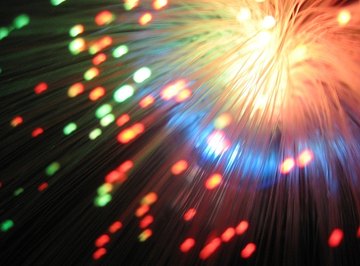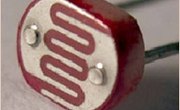
For decades, optical sensors have been finding their way into an increasing number of applications. The development of semiconductors in the 1940s and '50s led to lower-cost, compact and efficient light-sensing devices. Photodetectors were used in camera light meters, street lights and traffic counters. Fiber optics allowed sensitive equipment to work in electrically noisy environments. Sensors packaged with tiny integrated circuits yielded detectors that were simpler to use. Optical sensors have improved efficiency and reliability of control systems at a reasonable cost.
Photodetector
Light-sensitive semiconductor materials have been used in a variety of electronic components. Photodetectors range from simple resistive photocells to photodiodes and transistors. The detector must be part of a switching or amplification circuit; by themselves, they can carry only small amounts of current. They're used to control elevator-door closers, assembly-line part counters and safety systems.
Fiber Optics
Fiber optics have advantages over standard electrical cabling for some environments. The fibers carry no current, so they're immune to electrical interference. They pose no sparking or shock hazard if the cable is damaged. Depending on the design, the light in the fiber may be used as a sensor itself, or it may serve as a signal path for a separate sensor package.
Pyrometer
Objects radiate light according to their temperature and produce the same colors at the same temperatures. A pyrometer estimates the temperature of an object by sensing the color of the light it gives off. An optical pyrometer is an older device; the operator compares a glowing filament in a viewfinder to a hot object to determine its temperature. Electronic pyrometers use a light-sensitive semiconductor to measure temperature automaticallys. Pyrometers are used when direct contact is inconvenient, unsafe or impossible. Applications include monitoring smelting furnaces and determining the temperature of stars.
Proximity Detector
Miniature proximity detectors use light to sense when objects are nearby. They contain an LED source and a detector to measure reflected light. Measuring a few millimeters on a side, they're small enough to be used in small electronic appliances and cell phones. They have a range of a few inches, useful for determining the alignment of paper in a copier, for example, the presence of your hand, or if a laptop case is open or closed.
Infrared
Infrared sensors are used in situations where visible light would be inconvenient or counterproductive. They can be used to tell if someone's in a room, by the heat given off by a person's body. Infrared is also useful for signaling, forming the basis of remote controls for video and audio.
About the Author
Chicago native John Papiewski has a physics degree and has been writing since 1991. He has contributed to "Foresight Update," a nanotechnology newsletter from the Foresight Institute. He also contributed to the book, "Nanotechnology: Molecular Speculations on Global Abundance." Please, no workplace calls/emails!
Photo Credits
adrienneserra, creativecommons.org
